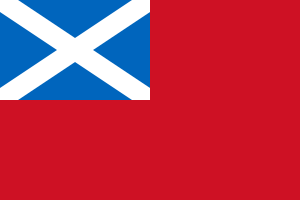Maritime history of Scotland facts for kids
The maritime history of Scotland is all about Scotland's connection to the sea. This includes things like ships and ports, how people navigated, and the lives of sailors. It also covers sea exploration, trade, and how the sea has inspired Scottish art.
Contents

King James I was a very important person for Scotland's shipping. He started a place to build ships in Leith. His son, King James II, brought new ideas about using gunpowder and cannons. Because of this, ships were built stronger to handle these new weapons. They also had high front parts (called forecastles) to hold the guns.
A key person in building these new warships was Bishop Kennedy. He helped build the St Salvator, which was a very expensive ship for its time. King James IV continued to make the navy stronger. He had 38 ships built and opened two new shipyards. His biggest achievement was building the Great Michael. This was the largest ship ever built in Scotland at that time. It cost a huge amount of money!
As Scotland and England became closer, especially after the Union of the Crowns (when one king ruled both countries), Scotland didn't need its own navy as much. By the time Scotland and England officially joined in 1707, the Royal Scottish Navy only had three ships left.
Famous Ships from Scotland
The River Clyde in Scotland was once the world's busiest place for building ships. In the 1800s and 1900s, about 30,000 ships were built there! It's no surprise that many famous ships came from Scotland.
The Great Michael
The Great Michael was launched in 1511. It was a massive ship, weighing 1,000 tons. It was 240 feet (73 meters) long and needed 1,000 sailors and 120 gunners to operate. At the time, it was the biggest ship in Europe! The ship was later sold to France in 1514.
The Cutty Sark
The Cutty Sark was a very fast clipper ship. It was built in 1869 in Dumbarton, Scotland. Clippers were designed to carry cargo quickly. The Cutty Sark raced other ships in the tea trade from China and later in the wool trade from Australia. It could sail at over 17 knots (31 km/h)!
This ship was first built with three square sails on each mast. Later, it was changed to a different type of sailing ship called a barquentine. In 1916, its masts were damaged, but it was repaired and used as a training ship. In 1952, a group took over the Cutty Sark to preserve it. It is now in Greenwich, England. In 2007, it was damaged by fire during repairs, but it has been fixed.
The Queen Mary
The RMS Queen Mary was a huge ocean liner built in 1936. It was constructed by John Brown & Company in Clydebank, Scotland. This ship sailed across the Atlantic Ocean between Southampton, Cherbourg, and New York City.
During the Second World War, the Queen Mary was used as a troop ship. It carried many soldiers, sometimes as many as 16,082 people on one trip! After the war, it went back to its Atlantic routes. However, these trips became too expensive to run. The ship stopped service in 1967. Today, the Queen Mary is in Long Beach, California, where it serves as a hotel and a popular tourist attraction.
HMY Britannia
The HMY Britannia was the Royal Yacht for the British royal family. It was the 83rd royal vessel since King Charles II's time in 1660. This Britannia was launched by Queen Elizabeth II on April 16, 1953. It started its service on January 11, 1954.
The ship was designed with three masts. The top 20 feet (6 meters) of the front two masts could be folded down. This allowed the ship to pass under bridges. Today, the Britannia is a permanent exhibition ship. You can visit it at Ocean Terminal in Leith, Edinburgh, Scotland.
Other Notable Ships
- PS Comet: Built in 1812, this was the first steamboat in Europe that made money.
- RMS Lusitania: This ship was famously sunk by a German U-boat during World War I. This event helped lead to the USA joining the war.
- RRS Discovery: This ship was built in Dundee. It was used for exploring the Antarctic.
Maritime Disasters
Scotland has also seen some sad maritime disasters.
- Eyemouth disaster
- Moray Firth fishing disaster

